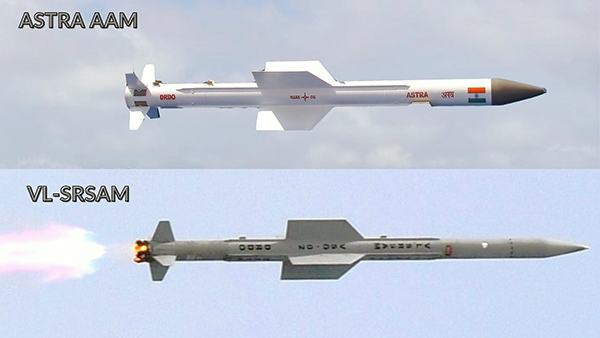The Defence Research and Development Organisation (DRDO), on 7 December, announced that India had successfully test-fired the Vertically Launched Short Range Surface to Air Missile (VL-SRSAM) from off the coast of Odisha for the second consecutive time since February 2021. The air defence system that can engage targets at around 15 km is being developed by DRDO for naval warships.
DRDO had, in November, successfully tested the high-speed expendable aerial target (HEAT), ABHYAS, used for evaluation of various missile systems, from the Integrated Test Range (ITR), Chandipur.
The VL-SRSAM has been designed and developed jointly by three facilities of the DRDO. The key DRDO facilities that contributed to the development of the system are Defence Research and Development Laboratory (DRDL) and Research Centre Imarat (RCI), both from Hyderabad, and Research & Development Establishment (Engineers) based in Pune.
The missile has the capability of neutralising various aerial threats at close ranges including sea-skimming targets. The tactic of sea skimming is used by various anti-ship missiles and some fighter jets to avoid being detected by the radars onboard warships. For this, these assets fly as close as possible to sea surface and thus are difficult to detect and neutralise.
The missile has been designed to strike at the high-speed airborne targets at the range of 40 to 50 km and at an altitude of around 15 km. DRDO officials have said its design is based on Astra missile which is a Beyond Visual Range Air to Air missile. Two key features of the VL-SRSAM are cruciform wings and thrust vectoring. The cruciform wings are four small wings arranged like a cross on four sides and give the projective a stable aerodynamic posture. The thrust vectoring is an ability to change the direction of the thrust from its engine control the angular velocity and the attitude of the missile.
VL-SRSAM is a canisterised system, which means it is stored and operated from specially designed compartments. In the canister, the inside environment is controlled, thus making its transport and storage easier and improving the shelf life of weapons
The test on 7 December, was conducted from a vertical launcher against an electronic target at a very low altitude. “The flight path of the vehicle along with health parameters were monitored using a number of tracking instruments deployed by ITR, Chandipur. All sub-systems performed as per expectation.” said a press statement from the Ministry of DefenCe. In its maiden trial held on February 22, the DRDO had tested the weapon system twice.
The 7 December launch of the system was conducted to validate integrated operation of all weapon system components including the vertical launcher unit with controller, canisterised flight vehicle, weapon control system. .
A warship has to employ various defence mechanisms to protect itself from anti-ship missiles and adversary aircraft. One of the age-old methods is chaffs — which is a countermeasure technology used worldwide to protect naval ships from enemy’s radar and Radio Frequency (RF) missile seekers. Another method is deploying missiles to counter Anti Ship missiles. These systems have to have a swift detection mechanism, quick response, high speed and high manoeuvrability. The VL-SRSAM claims to have all these qualities. However, it will have to undergo tests in different conditions and configurations to be ready for deployment on board Indian Naval Ships.


















